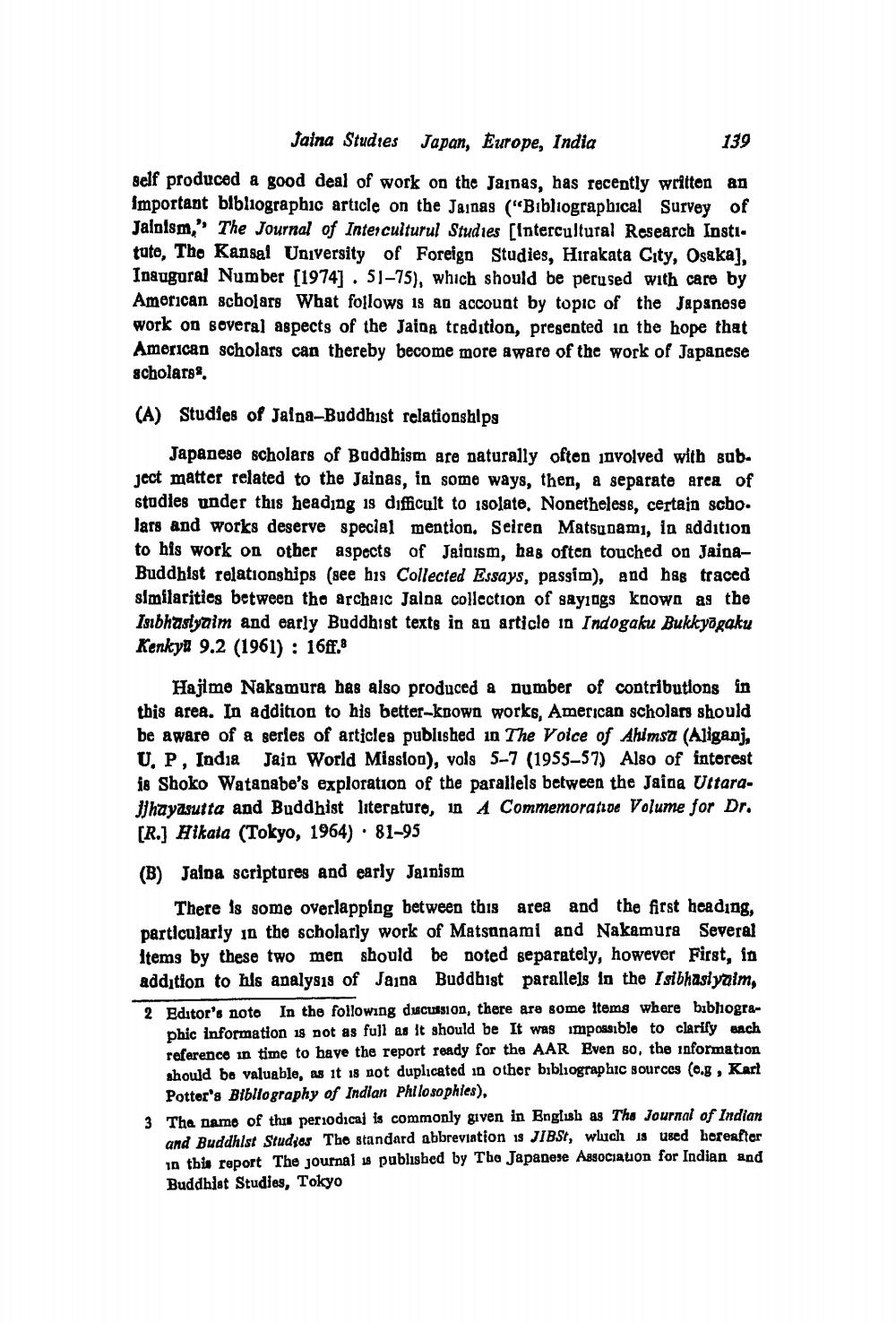________________
Jaina Studies
Japan, Europe, India
139
self produced a good deal of work on the Jainas, has recently written an Important bibliographic article on the Jainas ("Bibliographical Survey of Jainism," The Journal of Interculturul Studies [Intercultural Research Insti. tute, Tho Kansal University of Foreign Studies, Hirakata City, Osaka], Inaugural Number (1974] . 51–75), which should be perused with care by American scholars What follows is an account by topic of the Japanese work on soveral aspects of the Jaina tradition, presented in the hope that American scholars can thereby become more aware of the work of Japanese scholars.
(A) Studies of Jalna-Buddhist relationshlps
Japanese scholars of Buddhism are naturally often jnvolved with subject matter related to the Jainas, in some ways, then, a separate area of studies under this heading 19 difficult to isolate. Nonetheless, certain scbo. lars and works deserve special mention. Seiren Matsunami, in addition to his work on other aspects of Jainism, has often touched on JainaBuddhist relationships (see his Collected Essays, passim), and has traced similarities between the archaic Jaloa collection of sayings koown as the Isibhastyaim and early Buddhist texts in an article in Indogaku Bukkyôgaku Kenkyu 9.2 (1961) : 16ff.8
Hajime Nakamura has also produced a number of contributions in this area. In addition to his better known works, American scholars should be aware of a series of articles published in The Voice of Ahimsa (Aliganj, U, P, India Jain World Misslon), vols 5-7 (1955–57) Also of interest is Shoko Watanabe's exploration of the parallels between the Jaina Uttarajhayasutta and Buddhist literaturo, in 4 Commemoratide Volume for Dr. [R.] Hikala (Tokyo, 1964). 81-95
(B) Jalpa scriptures and early Jainism
There is some overlapping between this area and the first heading, particularly in the scholarly work of Matsanami and Nakamura Several Items by these two men should be noted separately, however First, in addition to his analysis of Jajna Buddhist parallels to the Isibhaslyaim, 2 Editor's noto In the following ducussion, there are some items where bibliogra
phic information is not as full as it should be It was impossible to clarify each reference in time to have the report ready for the AAR Even so, the information should be valuable, as it is not duplicated in other bibliographic sources (0.g , Karl
Potter's Bibliography of Indian Philosophies), 3 The name of this periodicaj is commonly given in English as The Journal of Indian
and Buddhist Studios The standard abbreviation 1 JIBST, wluch is used hereafter in this report The journal is published by The Japanese Association for Indian and Buddhist Studies, Tokyo




